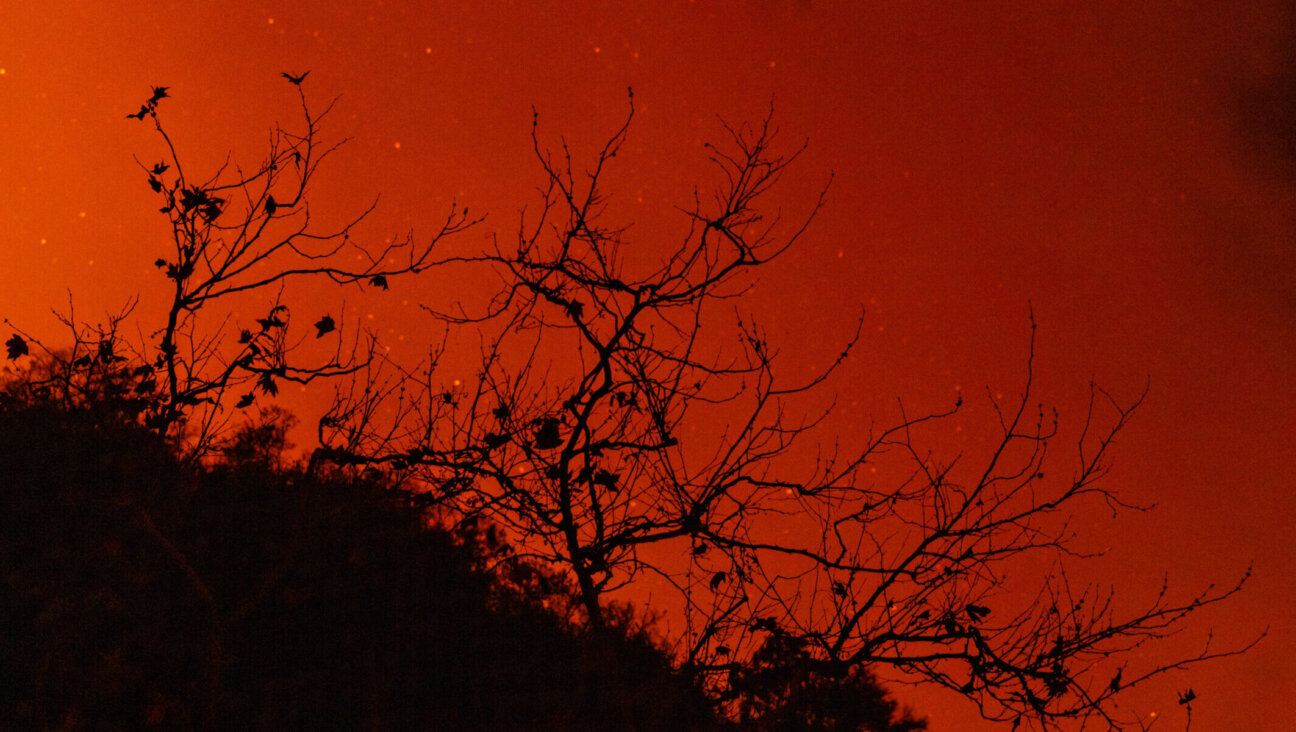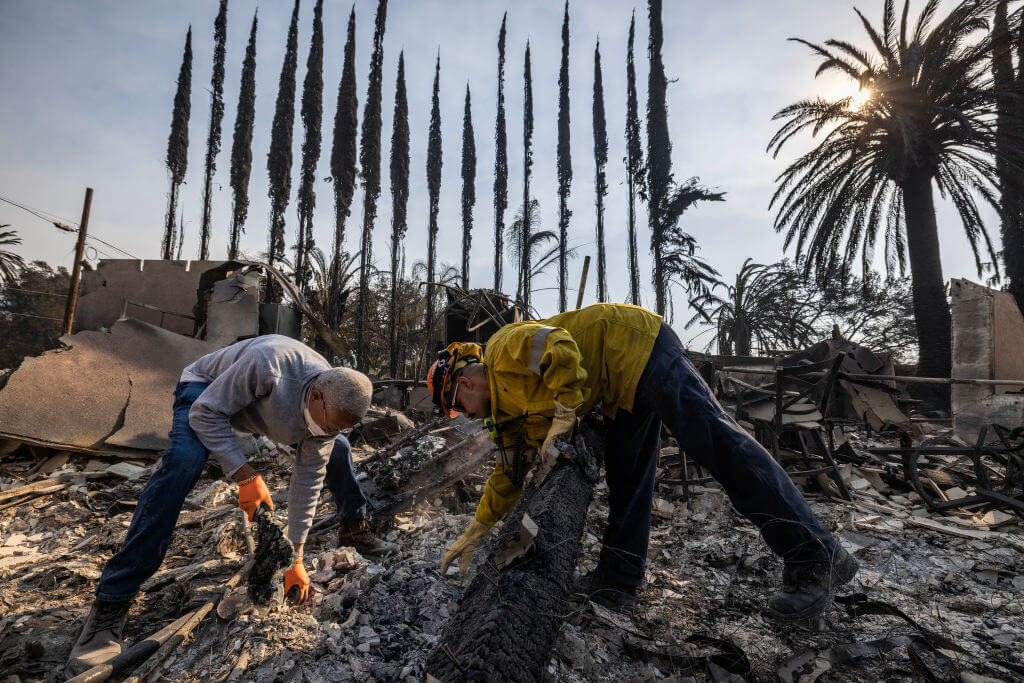Bedouins of Negev Desert Feel Betrayed by Israel Resettlement Plan

Long Fight: Israel claims it is doing what?s best for Bedouin peoples of the Negev desert by resettling them in nearby towns. But the ancient people vow to keep rebuilding their makeshift settlements ? and fight for their homes. Image by getty images
Khader Abu al-Kian’s dusty village of Atir has never existed on any official map, and now it is disappearing before his eyes.
For decades he and his fellow Arab Bedouins eked out a meagre existence in the Negev desert, largely under the Israeli government’s radar. But soaring property costs and a housing crisis are driving a new appetite in Israel for land and development opportunities, and even the harsh Negev looks good.
Israel has already invested around $5.6 billion to construct military bases in the Negev and will build 10 new communities there. The Bedouins will have to make way, a plan they say shows that Arabs are second-class citizens in Israel and is a betrayal given their past efforts to help build up the state.
The bulldozers have already been through Atir, demolishing homes and orchards, but Abu al-Kian, 70, refuses to leave.
“For 41 years I worked on this land, in the fresh air, for the Ministry of Agriculture and the Jewish National Fund, planting trees and putting out forest fires,” he said, wearing a white scarf on his head cinched with a black cord.
“I have citizenship, but they still destroyed my house. Now I have only the shirt on my back. It’s like they’re saying to me, ‘Just leave and go to hell’,” he said, his voice shaking.
The majority of Israel’s 1.6 million Arab citizens dwell in cities and small towns in the north and centre. But 200,000 Bedouins live in the southern desert, half in government-built townships and half in 42 ramshackle “unrecognised” villages without running water, electricity or sanitation.
A draft law, which will likely come to a final vote after parliament returns from recess in October, expects to have to move some 40,000 Bedouins from many of the unrecognised villages into the seven townships, although some villages will stay.
The “Prawer Plan” will compensate many Bedouin with a combination of land and cash and bring them into “the 21st century” by significantly improving their standard of living, according to a government-sponsored report on the draft.
The Israeli position is that developing the region provides an opportunity to address the needs of a long neglected segment of the population.
“We are determined to narrow the gap (between the Negev and the rest of the country),” spokesman for Israeli Prime Minister Benjamin Netanyahu, Mark Regev, told Reuters. “They are citizens of Israel and are entitled to all the opportunities associated with being citizens.”
ALIENATING THE COMMUNITY
Wadi Na’am, an unrecognised village like Atir, lies down a sunblasted stony track a short drive from the heart of the Negev “wine route”, with leafy Jewish-owned ranches that are popular weekend destinations for wine and cheese tasting.
Sitting in his small, concrete home, which a generator-powered fan labours in vain to cool, electrician and village council member Najib Abu Bneiyeh says Israeli policies are alienating the community.
Unlike the Arabs of the cities and the Israeli-occupied Palestinian territories, the Bedouin traditionally shied away from political activism and have volunteered in small numbers for Israel’s army, gaining renown for using ancient tracking skills to guard Israel’s frontiers.
“Many of us used to volunteer for military service,” Abu Bneiyeh said, looking at the yellowing pictures on the wall of relatives in combat fatigues. “But with the pressure we’re put under, the demolitions and the acts of racism we experience, the Arabs are doing this less and less.”
One complaint is that the committee drawing up the Prawer Plan, named after top Israeli planning official Ehud Prawer, had no Arab members and did not formally consult with the local representative body of the unrecognised villages.
“If the government were to recognise their villages, it would be obligated to provide services,” said Ofer Dagan of the Negev Coexistence Forum, a civil rights group.
“But the only way modernisation is offered to the Bedouin is through urban settlements, whereas the Jewish population is allowed a range of rural and agricultural modern settlements.”
On Aug. 1, hundreds of people staged protests against the plan at a junction near one of the townships, waving Palestinian flags to show solidarity with those in the occupied territories whom they see as fellow victims of Israel’s appetite for land in the form of expanding Jewish settlements.
“We are part of the Palestinian nationality as well as citizens of the state of Israel, but the Prawer Plan is depriving our youth of a future,” Abu Bneiyeh said.
“We see that they’re forcing us to move without giving us a say in how and where we can live, so the protests are a way of resisting.”
TOWNSHIPS
The Bedouins of the Negev, called Naqab in Arabic, are descendants of the semi-nomadic Arab tribes that once roamed the desert expanses, herding and farming.
Unemployment, crime, the high school drop-out rate and female non-participation in the work force are much higher in the community than in Israeli society at large.
Over two-thirds of Negev Bedouin lived below the poverty line in 2007, over four times the rate of Jewish households, according to the National Insurance Institute.
In the seven state-recognised townships, 16.2 percent unemployment stood at more than double the national average and only about 2 percent points lower than in the unrecognised villages, the Israeli Employment Service found in 2009.
Netanyahu’s spokesman Regev acknowledged that previous governments had not done enough to raise the living standards of the Bedouin and said building up the Negev would benefit all Israeli citizens.
“The Negev as a whole is underdeveloped in comparison to the rest of the country, and as part of the billions of shekels being invested into it, the government has budgeted affirmative action programs which will bring health care, infrastructure and education to the Bedouin community,” he said.
The government-sponsored report on the feasibility of the Prawer Plan said the “vast majority” of Bedouins in the illegal villages would not be much affected because the government would recognise some villages, while residents of others would be moving just “several hundred metres” into a township.
“By moving to a formal settlement … families will make it possible for their children to leap in time into the midst of the 21st century,” said the report by former minister Benny Begin. “Their destitution is accompanied by social problems that demand a comprehensive solution.”
Israel’s outlook can feel distant from the reality of Segev Shalom, a Bedouin township of around 8,000 where the green grass and palm trees planted in the main road median quickly give way to flat dusty expanses, trash fires and groups of idle youths.
“It’s like a warehouse, a dormitory where people just sleep at night and then go off to jobs on the outside by day,” said Khalil al-Jraibieh, who works in a small state-funded organisation that gives job training to young people.
“When we look at the Prawer Plan, which we totally reject, we see it as another racist law in a state built on racism.”
A message from our Publisher & CEO Rachel Fishman Feddersen

I hope you appreciated this article. Before you go, I’d like to ask you to please support the Forward’s award-winning, nonprofit journalism so that we can be prepared for whatever news 2025 brings.
At a time when other newsrooms are closing or cutting back, the Forward has removed its paywall and invested additional resources to report on the ground from Israel and around the U.S. on the impact of the war, rising antisemitism and polarized discourse.
Readers like you make it all possible. Support our work by becoming a Forward Member and connect with our journalism and your community.
— Rachel Fishman Feddersen, Publisher and CEO























